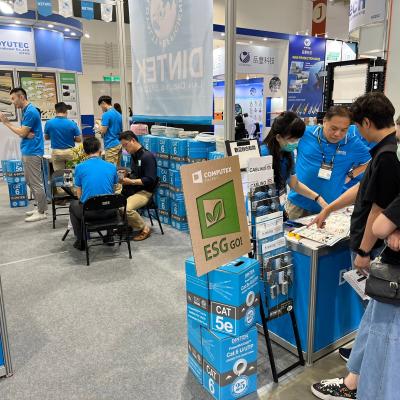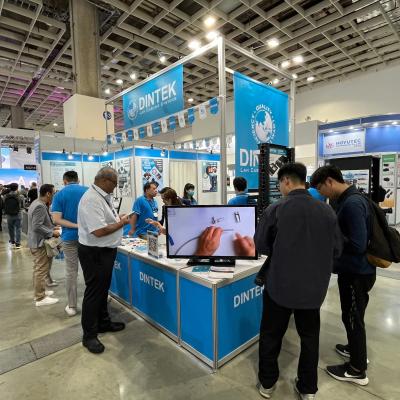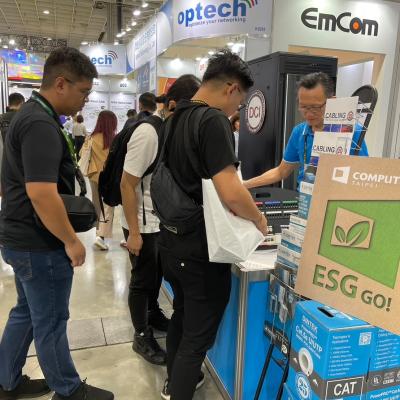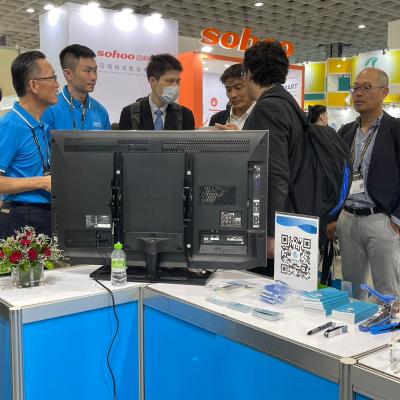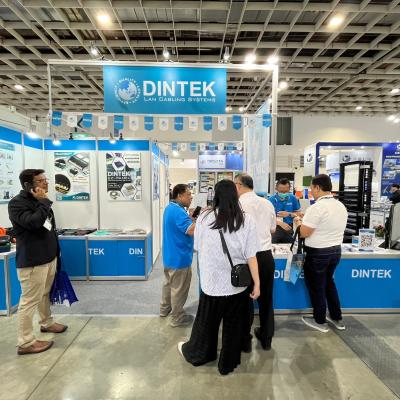Rethinking Cable Bundling
When it comes to data cabling installations, the question of bundling cables is often debated. While neat bundles can provide an organized appearance, they can also introduce technical challenges such as heat buildup, signal degradation, and interference. Let’s dive into how cable bundling has evolved and explore the pros and cons in the context of modern network installations, particularly with the rise of advanced technologies like 10 Gigabit Ethernet and Power over Ethernet (PoE).
WHAT IS CABLE BUNDLING?
Cable bundling refers to grouping multiple cables together and securing them with ties, velcro, or other fasteners. The goal is to improve organization, maximize space, and simplify installation. Bundles can range from a handful of cables to large groups, especially in large data centers, offices, or industrial environments.
However, the decision to bundle goes beyond aesthetics and convenience - there are important technical and performance considerations that must be factored in, particularly with modern cable types and power demands.
Category 6A and alien crosstalk
PoE and heat accumulation in bundles
When Category 6A cabling was introduced to support the increasing bandwidth demands of 10 Gigabit Ethernet, the primary concern wasn’t heat but alien crosstalk - the interference that occurs when cables are bundled tightly together. Alien crosstalk happens when signals from one cable bleed into adjacent cables, particularly over longer distances, leading to performance degradation.
Industry experts, as well as standards organizations like TIA, ISO/IEC, and BICSI, initially advised installers to avoid bundling Category 6A cables and instead let them rest naturally in pathways. Additionally, they cautioned against overfilling conduits to reduce the risk of alien crosstalk. However, despite these warnings, many installers continued to bundle cables to maintain a tidy and professional look for their customers.
Fortunately, the emergence of high-performance Category 6A cables with improved designs helped mitigate alien crosstalk concerns. These innovations meant that, in many cases, bundling no longer posed a significant issue for modern Category 6A installations.
The advent of higher-powered Power over Ethernet (PoE), particularly Type 3 (60W) and Type 4 (90W), brought about a different challenge - heat rise. With PoE delivering more power over Ethernet cables, bundling posed a new risk. The smaller the gauge of the cable and the larger the bundle, the more heat builds up, potentially causing insertion loss—a reduction in signal power. Insertion loss negatively impacts data transmission, leading to slower networks and potential errors.
To address this growing concern, several industry standards organizations, including TIA and ISO/IEC, provided new guidelines. In particular, TIA’s TSB-184-A Guidelines, now incorporated into the TIA 568.2-D standard, advise reducing the size of cable bundles or eliminating them altogether in environments with high PoE delivery to prevent overheating.
Navigating bundling rules in the 2017 National Electric Code
While the ampacity table offers important safety measures, it can be cumbersome to use in real-world installations. To simplify matters, LP-rated cables offer a viable alternative. These cables are rated by Underwriters Laboratories (UL) for both data transmission and power delivery, up to the ampere limits marked on the cable, without exceeding its temperature rating. Using LP-rated cables means installers can sidestep the complex ampacity calculations and bundle cables without restriction, offering a streamlined approach to compliance.
The pros of Cable Bundling
Bundling helps keep cables organized and visually neat, making installations look more professional. It also simplifies the identification of specific cables, which can be helpful for large data centers.

The cons of cable bundling
Bundling can cause heat buildup, particularly in PoE environments, which increases insertion loss and reduces performance. This is especially relevant with Type 3 and Type 4 PoE applications.
BEST PRACTICES FOR CABLE BUNDLING
The magic number 24 is a key rule to keep in mind when bundling. If you limit the number of cables in a bundle to 24, you can avoid most of the issues related to heat rise in typical installations, even when using PoE at high power levels. Cables that are 24 AWG or larger, with a minimum operating temperature of 60°C, can handle the heat dissipation effectively in most environments. This simple rule, recommended by many cable manufacturers, fits well with standard 24- or 48-port patch panels and switch configurations.
Additionally, consider these best practices:
Avoid over-tightening: Use velcro ties rather than zip ties to prevent compression damage.
Maintain proper bend radius: Avoid bending cables too tightly to maintain signal integrity.
Use higher diameter cores: If you anticipate using higher levels of PoE power, consider using cables with larger core size to eliminate concerns about bundle size.
To bundle or not to bundle?
The decision of whether to bundle cables comes down to balancing neatness and performance. Bundling can make installations look professional and organized, but it also introduces risks. In the case of Category 6A and higher, installers need to be aware of both alien crosstalk and heat rise.
While modern cable designs have reduced alien crosstalk as a concern, heat rise remains an issue, especially when high-powered PoE is involved. With that said, following the guidance of standards bodies, opting for cables with larger core size, and keeping bundles small can allow you to strike the right balance.
Ultimately, bundling can still be part of an effective cable management strategy, but understanding and mitigating the risks is key to ensuring network performance and longevity.


